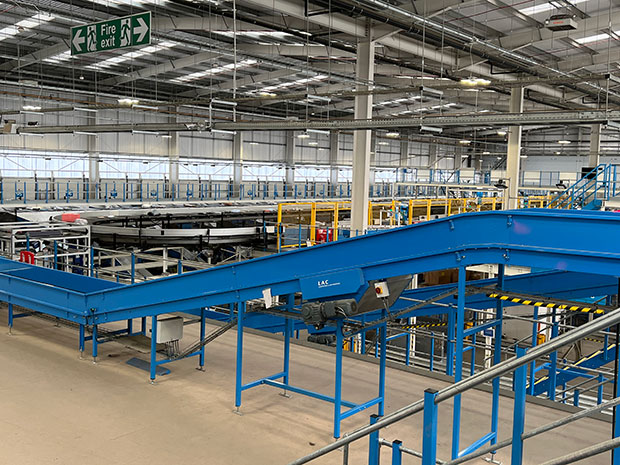Changing customer behaviour along with new digital communication challenges and the rapid increase in ecommerce business means the UK’s leading consumer delivery specialist and long-term customer to LAC, is continually looking to improve its efficiency and innovation.
 The distribution hub based up in the Northwest required an upgrade to current operations. With any upgrade or new system implementation, LAC are always mindful to ensure that its solutions can be easily and efficiently scaled up and down upon demand, whilst being equipped with the necessary infrastructure to cope with growing volumes during longer periods of intense activity.
The distribution hub based up in the Northwest required an upgrade to current operations. With any upgrade or new system implementation, LAC are always mindful to ensure that its solutions can be easily and efficiently scaled up and down upon demand, whilst being equipped with the necessary infrastructure to cope with growing volumes during longer periods of intense activity.
Project “Flyer Van Automation” required an automated transport and sortation solution to accommodate 120 van loads per day, processing the traffic via a scanning tower and automated sortation, directly onto 38 existing outfeed boom conveyors, providing a consistent flow of around 5,000 parcels per hour.
The current operation required a lot of human intervention with vans being offloaded from outside the building into cages, which were then manually hauled into the hub for sortation and then taken to the appropriate 38 outfeed doors. The introduction of an automated system would reduce the manual labour currently associated with the process therefore reducing/ eliminating the number of “mis sorts” due to human error. The new system would also offer increased throughputs while providing full traceability of parcels, polybags, and irregular shaped traffic.
The solution utilised circa 350 metres of LAC Post and Parcel conveyor, designed specifically to meet the exacting standards of the hugely demanding Post and Parcel handling industry. LAC’s new range of belt conveyors and multi-functioning switch sorter units provide the robust, efficient, and precise product movement this industry sector insists upon. Ideal for the variety of shapes, sizes and loads required, offering up to 80Kg/metre, this high performance, reliable range of equipment is modular in design, providing easy installation and integration across the range of products.
Infeed (located outside) consisted of a 14-meter-long, one sided, belt conveyor, hot dipped galvanized finish providing weather protection. The operators load products onto the high-speed conveyor from a dedicated loading point outside the hub building. The belts on infeed utilised gauge strips at 600mm pitch to provide initial gapping of product with additional gapping created on belt conveyors inside the hub prior to the induct conveyors.
Once the parcel is on the in-feeding conveyor it automatically travels into the hub and inclines up to a 5-sided camera scanning tower (with volumizing functionality) via suitably located gapping belts. If the parcel is oversized, then the system will reject the parcel (either using the sorter if the parcels can be processed on the machine or by stopping the infeed and waiting for an operator to remove it if the parcel is over-sized). The control system identifies the barcode (either 1D or 2D) and calls an API to ensure the parcel is transferred to the correct destination or will revert to a local lookup table to make the routing decision.
Once the identification system has obtained the identity and volume of the parcel, the system indexes the parcel onto an automatic sorter with the parcel then being diverted to one of the multiple destinations, dependent on barcode etc. The system offers provision for rejecting parcels and the sorter continuously monitors the fill level of the destinations and reject area to ensure a continuous flow is maintained.




Comments are closed.